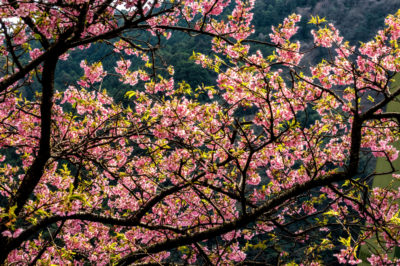Caring for a Cherry Blossom Tree
The first step in giving a cherry blossom tree the care it needs is planting it in the right location. The right location is:
- A USDA plant hardiness zone between 5 and 8.
- Fertile soil with good drainage and a slightly acidic pH level.
- Adequate space around the tree for its ultimate size.
- A planting spot which is sheltered from extreme heat and cold.
Soil
Cherry blossom trees can grow in soils ranging from loam to clay to sandy in composition, however, the soil must drain well. If water stands for a long time in a test hole, or drains out very quickly, drainage may not be optimum for this type of tree.
Spacing
The largest flowering and weeping cherry trees grow as tall as 40 feet (12.2 meters) with a branch spread of up to 30 feet (9.2 meters). Dwarf trees can be as small as 7 feet (2.2 meters) in height. Plant trees far enough away from buildings, other structures, and other trees to give them the space they need when fully grown.
Exposure
These delicate trees do not do well under weather extremes. In warmer locations, planting cherry blossom trees in partial or full shade can protect them from extremes of heat and drought. Planting next to hillsides or hedgerows can provide protection from wind.
Watering, Fertilizing, and Pruning Cherry Blossom Trees
Flowering cherry trees need regular water and soils which do not dry out completely. However, they are prone to fungal infections if they receive too much water or are planted where water does not drain away fast enough. Soil should remain moist 3 inches (7.6cm) below the surface but not become soggy. Mulching around the base of the tree helps retain soil moisture.
Ornamental cherry trees like a moderate amount of fertilizer applied in early spring before flowers emerge or in summer after blossoms have fallen. A two inch (5cm) layer of compost spread from the base of the tree to the drip line often provides enough nutrients if it is watered into the soil.
Cherry blossom trees do not need much pruning, however, you should remove dead and diseased branches and lightly trim the tree to maintain its shape.
Keeping the tree healthy by planting, watering, and fertilizing properly is the best prevention against pests and diseases.
